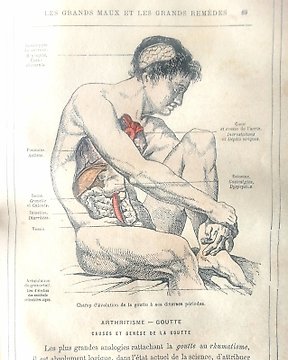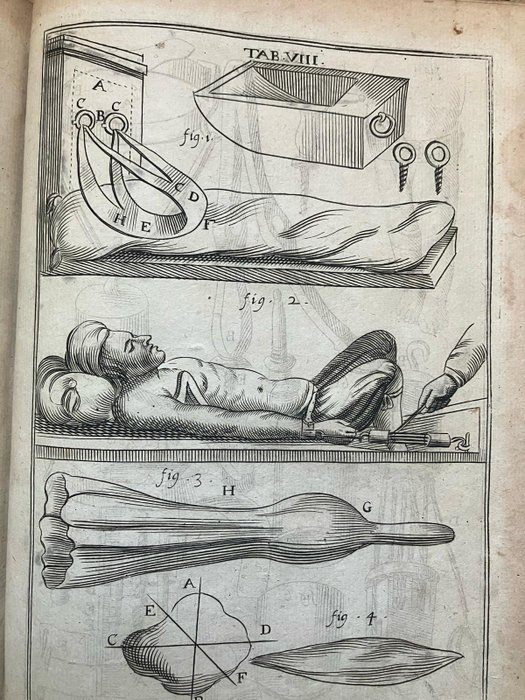
Docteur J. Rengade - Les grands maux et les grands remèdes - 1889
N.º 82720079

N.º 82720079

Observations chirurgiques de Guillaume Fabri de Hilden : medecin et chirurgien tre-renommé de S.A. George Frideric, marquis de Baden & Dourlach, & de la Republique & Canton de Berne : tirées de ses centuries, epitres, traités de la dysenterie, gangrene, brûlures, & autres oeuvres : ausquelles on a âjouté un traité de la gangrene mis en lumiere du vivant de l'autheure.
Quarto: [20], 614, [19] pages, 17 unnumbered leaves of plates.
Wilhelm Fabry (also William Fabry, Guilelmus Fabricius Hildanus, or Fabricius von Hilden) (1560 − 1634), often called the "Father of German surgery", was the first educated and scientific German surgeon. He is one of the most prominent scholars in the iatromechanics school and author of 20 medical books. His Observationum et Curationum Chirurgicarum Centuriae, published posthumously in 1641, is the best collection of case records of the century and gives clear insight into the variety and methods of his surgical practice. He developed novel surgical techniques and new surgical instruments.
Fabry developed a device for operating eye tumours. His wife, Marie Colinet (or Fabry), was a Swiss midwife-surgeon who improved the techniques of cesarean section delivery. She helped her husband in his surgical practice and was the first (in 1624) to use a magnet to extract metal from a patient's eye (a technique still in use today). Fabry wrote a detailed description of the procedure in his Centuriae and, although he explicitly mentioned his wife as having invented it, was given credit for the discovery.
Here is his magnum opus in French in a good and strong copy. There is some staining and browning due to paper quality.
Uniform gentle toning and presented in the original decorated calf binding. The work is the first French edition of the book, complete with all plates and errata sheets.
Cómo comprar en Catawiki
1. Descubre algo especial
2. Haz la puja más alta
3. Paga de manera segura